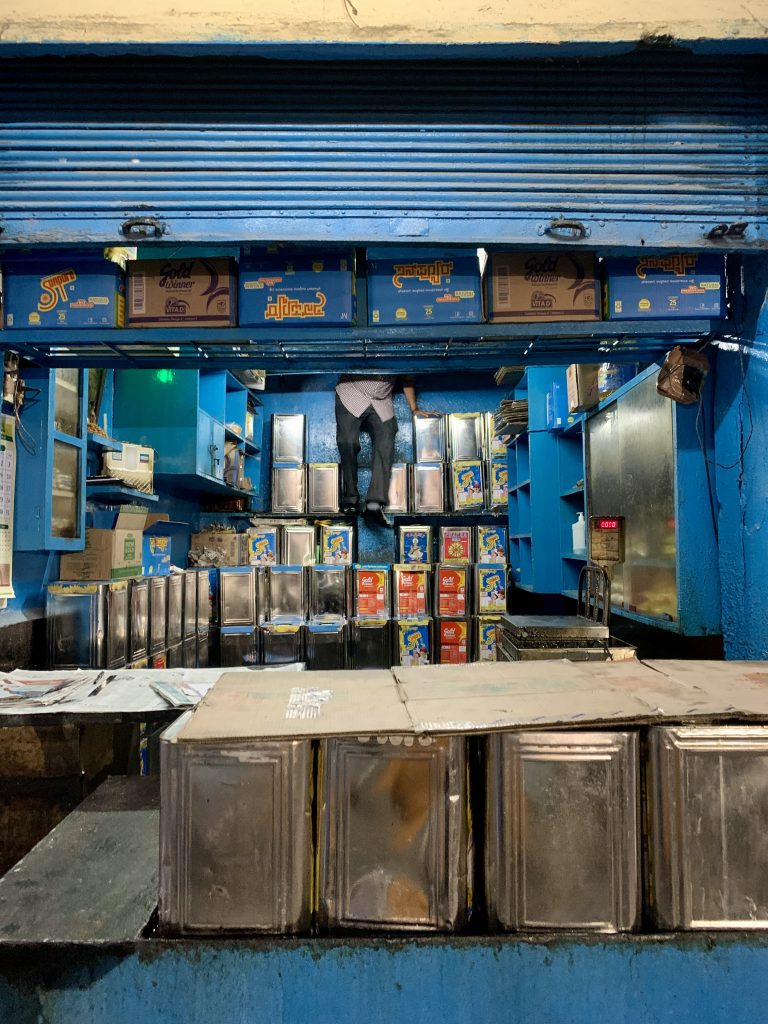Blogs
Why I Love Art: How Raghu Rai’s Photograph Changed My Approach to Photography
Priyanka Sacheti
In the spring of 2007, I saw photographer Raghu Rai’s image, Evening Prayer, Jama Masjid (1985) for the first time inside the pages of a Delhi city magazine. As you can see, this monochrome image depicts a lady in prayer inside a rooftop room, the old Delhi skyline in the background. I was coincidentally in Delhi at that time for an extended visit and had begun to explore the bylanes of the old city for the first time, delightedly discovering its vitality.

Evening Prayer, Jama Masjid, Delhi 1982, by Raghu Rai, Courtesy: Raghu Rai Foundation
When I saw this wonderfully atmospheric, dramatic image, it left a powerful, haunting impression upon me. The fact that I happened to be in Delhi when discovering it made both, the image and city, more immediate and visceral to me. Gazing at the swirling drama of the clouds and the woman immersed in prayer, the Jama Masjid in the background, I felt the image was an ode to reverence: both to an unseen higher power as well as nature, specifically dusk in this case; the twilight zone between the day’s spent heat and the inky coolness of the beckoning night. I felt that I could almost hear the evening azaan reverberating through the air. The image also represented an interplay of public and personal spaces – the sweeping largeness of the city juxtaposed with the intimacy of a small, lit room, the figure oblivious to everything but her prayers. The more I looked at the photograph, the more I felt as if I were there myself, acting as a spectator and a participant.
I remember tearing the picture out from the magazine and pinning it above my desk when I returned home to Muscat, where I lived then. It stayed there for months, reminding me both of that memorable Delhi sojourn and the incredible storytelling power of photography. It was the first time that a photograph had held me in so much thrall.
At the time, I was using a simple digital camera to take pictures, slowly exploring the world of photography one capture at a time. My photographic practice, or rather interest, was primarily focused on documenting a scene for posterity. This image, however, urged me to dwell on my reasoning behind taking a picture in the first place. I thought of the multiple narratives embedded inside the picture and why it had left such an indelible impression upon me. Thinking about my own photography, I started to wonder about the difference between preserving a scene for posterity and weaving a narrative out of it. Why was I photographing that tree? When I looked at an animated street scene, what was I hoping to convey through the taking of the picture? How would presenting the picture in monochrome affect the way the picture would be perceived?

Submerged by Priyanka Sacheti, Jogpalya, Bangalore 2021, Photo credit: Priyanka Sacheti
I have been taking pictures regularly for over a decade now and the ability to express myself through photography has now become almost as important to me as my writing. It remains a constant, continuous journey, where I keep an eye out for stories which I can hopefully capture within the scope of my own images.
Priyanka Sacheti is an independent writer and poet based in Bangalore, India. She writes about art, culture, gender, and the environment for international and Indian publications and tweets @priyankasacheti.








